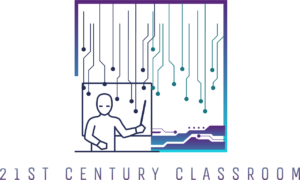In today’s fast-paced and rapidly evolving world, collaboration has emerged as a key driver of innovation and productivity. With the complexity of modern challenges and the need for diverse perspectives, the power of collaboration has become more apparent than ever before. This article explores the benefits, challenges, and success stories of collaboration, highlighting how it can unlock innovation and boost productivity in various work environments.
The Benefits of Collaboration
Collaboration brings forth a plethora of benefits that fuel creativity, innovation, and productivity. By bringing together individuals with different backgrounds, experiences, and expertise, collaboration creates a fertile ground for enhanced creativity and innovation. Through collaborative brainstorming and idea generation, teams can tap into a diverse range of perspectives, opening up new possibilities and uncovering breakthrough solutions. This cross-pollination of ideas leads to out-of-the-box thinking, challenging the status quo, and driving innovation forward.
Moreover, collaboration amplifies productivity and efficiency within teams. By sharing workloads and leveraging individual strengths, teams can achieve more collectively than they could individually. Collaboration enables faster decision-making and problem-solving, as diverse insights and collective intelligence help in evaluating options, identifying risks, and finding the most effective solutions. With improved time management and task coordination, collaboration ensures that projects progress smoothly, deadlines are met, and resources are optimized.
Breaking Down Silos: Collaboration across Departments
Collaboration is not limited to individual teams but extends to fostering a culture of collaboration across departments within an organization. Breaking down silos allows for the seamless flow of knowledge and expertise throughout the organization, leading to better decision-making and problem-solving. By encouraging effective communication and information sharing, organizations can harness the collective wisdom of their employees, avoiding duplication of efforts and fostering a culture of continuous learning.
Cross-functional collaboration is particularly powerful, as it brings together individuals from different departments to work towards a common goal. This approach enables organizations to tap into a wide range of skills and perspectives, promoting holistic solutions and enhancing overall performance. Through cross-functional collaboration, organizations can leverage the expertise of various departments, leading to innovative ideas, efficient processes, and improved customer experiences.
Tools and Technologies for Effective Collaboration
In today’s digital era, numerous tools and technologies facilitate effective collaboration. Project management and collaboration tools offer real-time communication platforms, enabling teams to connect, discuss, and share ideas instantly. Document sharing and version control features ensure that team members can collaborate on documents simultaneously, reducing version conflicts and streamlining workflows. Task management tools help teams organize and track their progress, ensuring transparency and accountability.
Virtual collaboration tools have gained even more significance in remote work environments. Video conferencing and virtual meeting platforms enable teams to connect face-to-face regardless of their physical location, fostering a sense of presence and improving communication. Virtual whiteboards and collaborative document editing allow for real-time brainstorming and visualizing ideas, even when team members are not in the same room. Online project management and task tracking tools provide visibility into team progress, making it easier to manage remote teams and maintain productivity.
Overcoming Challenges in Collaboration
While collaboration offers numerous benefits, it is not without its challenges. Communication barriers and misunderstandings can hinder effective collaboration. Clear and open communication is crucial, ensuring that everyone is aligned and understands their roles and responsibilities. Active listening and providing constructive feedback can help overcome communication challenges and ensure that ideas are understood and incorporated effectively.
Managing conflicts is another challenge in collaboration. Differences in opinions and approaches are inevitable, but fostering a positive team culture based on trust and respect can facilitate constructive conflict resolution. Encouraging open dialogue, promoting empathy, and seeking win-win solutions can turn conflicts into opportunities for growth and better collaboration.
Balancing individual contributions and collective goals is essential for collaboration to thrive. It is crucial to recognize and appreciate individual expertise and perspectives while aligning them with the overarching objectives of the team or organization. By fostering a culture that values collaboration over individualism, teams can harness the collective potential while acknowledging and celebrating individual contributions.
Case Studies: Success Stories in Collaborative Innovation
Real-world examples demonstrate the transformative power of collaboration in driving innovation and productivity. Take Company X, for instance. By establishing a collaborative ideation and prototyping process, they encourage employees from different departments to contribute ideas and experiment with new concepts. This collaborative approach has resulted in a steady stream of innovative products, leading to increased market share and customer satisfaction.
Company Y, on the other hand, has excelled in cross-functional collaboration. By breaking down silos and fostering a culture of collaboration, they have witnessed improved efficiency and performance across departments. The sharing of knowledge and expertise has accelerated problem-solving, minimized duplication of efforts, and maximized the utilization of resources.
Takeaway
Collaboration is a powerful tool that can unlock innovation and boost productivity in today’s dynamic work environments. By embracing collaboration, individuals, teams, and organizations can tap into the collective wisdom, diverse perspectives, and shared creativity of their members. Collaboration breaks down silos, fosters effective communication, and promotes cross-functional collaboration. By leveraging the right tools and overcoming challenges, collaboration can be a catalyst for success, leading to groundbreaking innovations, improved efficiency, and enhanced productivity. Embrace the power of collaboration and unlock the full potential of your team and organization.

